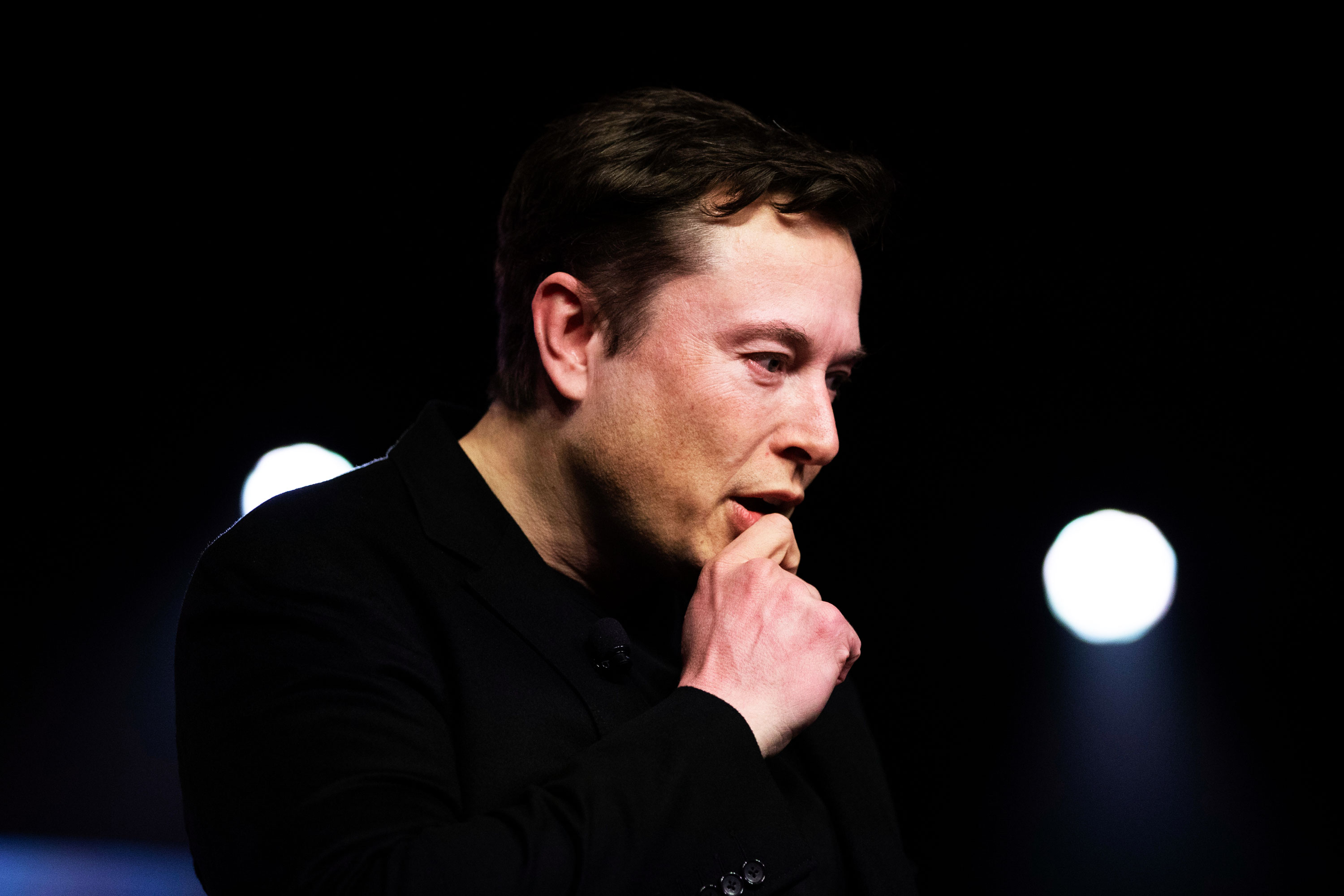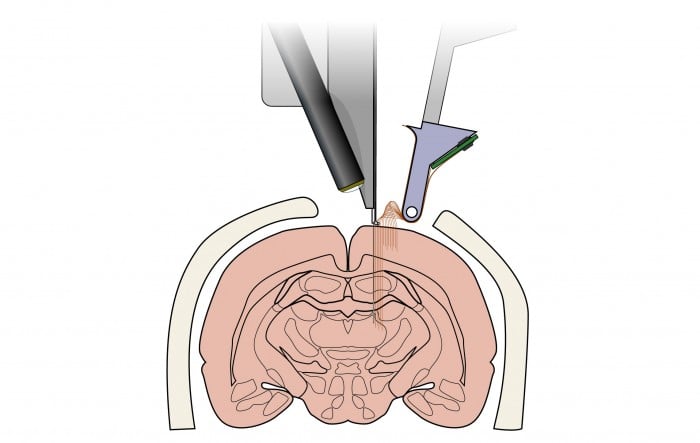Elon Musk’s brain-interface company is promising big news. Here’s what it could be.

Neuralink, the secretive company bankrolled by Elon Musk to develop brain-computer interfaces, will provide its first public update later today in an event streamed over the internet.
This could be the big reveal of what the mysterious company has been up to since Musk announced it two years ago, and hired a pack of leading university neuroscientists to pursue his goal of connecting human brains directly to artificial-intelligence software.
Although everything about Neuralink is top secret, here at MIT Technology Review, we couldn’t resist guessing at what the company will show the world. A look at the available evidence suggests Neuralink will show off a “high-bandwidth” connection to a monkey brain—one able to extract lots of information by recording the activity of many neurons at once, using ultrathin flexible electrodes. That could be used to do something cool, like get a monkey to play a video game with its mind.
But whatever tomorrow’s event is about, we predict Musk’s costly brain-decoding venture will struggle to address one very hard question: What is Neuralink’s brain interface actually for? And does the company have the right technology for the job?
According to Musk, also the founder of Tesla and SpaceX, human minds need to plug into the internet so that our species can keep up with AI. That’s the futuristic scenario the billionaire laid out in April 2017 via a marathon post on the website Wait But Why. But before we can all become cyborgs, companies like Neuralink first need an actual medical reason why metal and computer chips would belong in a person’s head.
“I think the pathway is to demonstrate in primates they can reliably record a large number of neurons, in a model of disease,” says Christian Wentz, a technologist who sold his neurotech startup to a competing brain-interface company, Kernel. “The whole move is to justify to the FDA why you’d put all this in someone’s brain.”
Exactly what type of application Neuralink has in mind, and might show off, is not known—that’s a secret held even closer than its technology platform. Previously, experimental brain interfaces have been used to let paralyzed humans move cursors and robotic arms with their thoughts, to try to listen in to their speech, to stimulate memory formation, and to try to treat depression.
A challenge for the company is that the high-density recording technology Musk is pursuing isn’t necessarily what you’d pick to treat a given brain disease, one of Neuralink’s founding team members, Tim Hanson, told MIT Technology Review. Hanson, now at the Howard Hughes Medical Institute’s Janelia Research Campus, in Virginia, said he thinks such technology is better suited for basic science research on animals and that a push toward human use could be premature.

What is it?
Based on speculation from outside experts, former insiders, and the past work of scientists Neuralink has hired, the company may be using what’s called a neural “sewing machine” to inject flexible wire electrodes into a monkey’s brain and then record from a very large number of neurons at once. That could be a big part of the reveal. Neuralink may also talk up new computer chipsets that can simplify the flood of information crackling out of the brain or send the data off the skull wirelessly, which would do away with clumsy cables. The demo might even include a way to send signals back into the brain, as well.
“Proof of principle of dense-ish recording would be my best bet,” Konrad Kording, a neuroscience professor at the University of Pennsylvania, said in a text message. “1,000 channels would be impressive for a new technology.”
Currently, experimental brain-machine interfaces employ stiff metal electrodes; one called the Utah Array consists of about 100 sharp needles carved from silicon, fired into the brain with an air gun. These are superb for picking up electrical signals from neurons as they fire, but they can damage tissue and stop working after a while. (The human brain, it turns out, moves quite a lot inside the skull.) That’s led Neuralink to explore fine, ultra-thin electrodes made from carbon fiber or polymers—but they’re so wiggly that they’re hard to implant.
That’s where the “sewing machine” may come in. Before they joined Neuralink from the University of California, San Francisco, two of its founding team members, Hanson and Philip Sabes, along with Michel Maharbiz at UC Berkeley, developed a device that employs a stiff needle to drive the flexible electrodes into the brain. Hanson says the strategy was the “main thrust” of Neuralink’s internal research, at least through at last October, when he left the company amid what he calls disagreements over scientific priorities and decision-making.
Of course, it’s possible that Neuralink will spring some entirely unexpected technology in its event tomorrow. Members of the company’s founding team have worked on brain interfaces as widely different as tiny metal seeds (so-called “neural dust”) powered by sound waves and holograms that convey data into animal brains.

Wait, but why?
It’s obvious that the overworked and brilliant Musk, who is not a biologist, is keen to make fast progress. Hanson said Neuralink’s president, Max Hodak, wants to get a huge number of measurements from human brains. That’s cool, but it’s not necessarily what you’d do to treat a disease. “Max and Elon were eager to go quickly to humans; the general consensus is that this is risky,” he said. “If you want to augment a human, you need to do a lot of basic work first.”
(We emailed several Neuralink employees for comment, including Hodak, but didn’t hear back.)
Some scientists are concerned about focusing too much on the sheer number of electrodes that can be stuffed into a brain. In 2017 DARPA handed out $65 million to build a “brain modem” that could connect with a million neurons, but José-Alain Sahel, who is working on brain implants to restore vision at the University of Pittsburgh, told me he’s suggested that the agency deemphasize the numerical goal. “A million electrodes is hard to achieve and might not even be good for the brain,” says Sahel. “What’s important for treatments is whether the signal is meaningful.”
One factor behind the drive for a dense web of connections is the hope that if the brain can be measured at a larger scale, then the buzzing of thousands, or millions, of neurons could be fed into a deep-learning program—like those in development by OpenAI, another Musk venture. Just as such systems have learned to dominate at games like Go and the poker game Texas Hold’em, perhaps with enough data they can decode the language of the brain, too.
“The philosophical bet is that recording from enough neurons will allow us to figure out what the brain is doing and have this wild brain-machine interface,” says Wentz.
Today we may find out exactly how wild.
Correction: Neuroscientist Tim Hanson was a member of the founding team at Neuralink. A previous version of this article described him incorrectly as a founder of the company.
Deep Dive
Artificial intelligence
Large language models can do jaw-dropping things. But nobody knows exactly why.
And that's a problem. Figuring it out is one of the biggest scientific puzzles of our time and a crucial step towards controlling more powerful future models.
Google DeepMind’s new generative model makes Super Mario–like games from scratch
Genie learns how to control games by watching hours and hours of video. It could help train next-gen robots too.
What’s next for generative video
OpenAI's Sora has raised the bar for AI moviemaking. Here are four things to bear in mind as we wrap our heads around what's coming.
Stay connected
Get the latest updates from
MIT Technology Review
Discover special offers, top stories, upcoming events, and more.